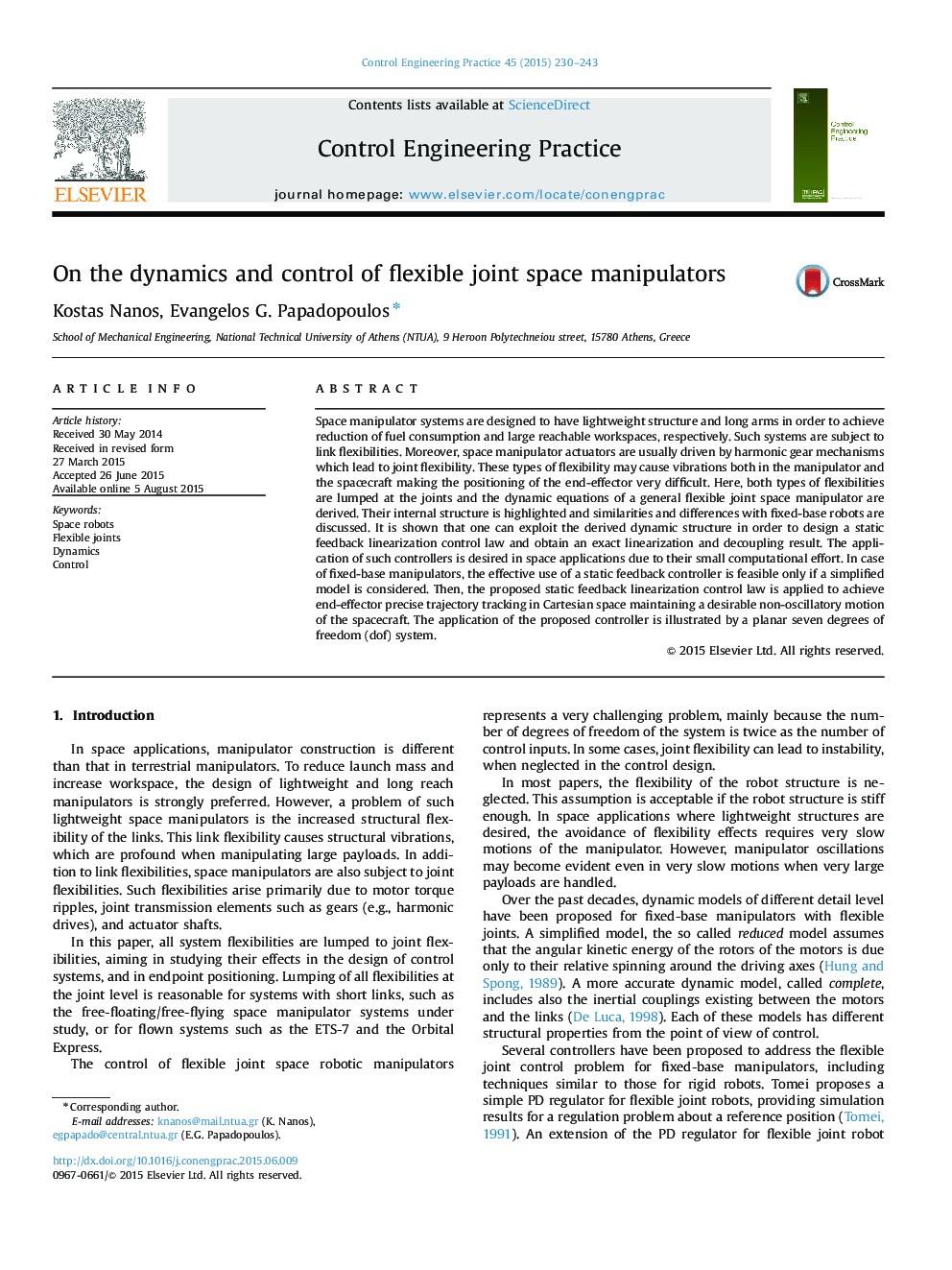| Article ID | Journal | Published Year | Pages | File Type |
|---|---|---|---|---|
| 699270 | Control Engineering Practice | 2015 | 14 Pages |
•Dynamics of flexible-joint space manipulators is established.•Model structure differences, between fixed-base and free-floating robots, is shown.•The model structure of free-floating robots is exploited in their control.•Both end-effector tracking and non-oscillatory base motion is achieved.
Space manipulator systems are designed to have lightweight structure and long arms in order to achieve reduction of fuel consumption and large reachable workspaces, respectively. Such systems are subject to link flexibilities. Moreover, space manipulator actuators are usually driven by harmonic gear mechanisms which lead to joint flexibility. These types of flexibility may cause vibrations both in the manipulator and the spacecraft making the positioning of the end-effector very difficult. Here, both types of flexibilities are lumped at the joints and the dynamic equations of a general flexible joint space manipulator are derived. Their internal structure is highlighted and similarities and differences with fixed-base robots are discussed. It is shown that one can exploit the derived dynamic structure in order to design a static feedback linearization control law and obtain an exact linearization and decoupling result. The application of such controllers is desired in space applications due to their small computational effort. In case of fixed-base manipulators, the effective use of a static feedback controller is feasible only if a simplified model is considered. Then, the proposed static feedback linearization control law is applied to achieve end-effector precise trajectory tracking in Cartesian space maintaining a desirable non-oscillatory motion of the spacecraft. The application of the proposed controller is illustrated by a planar seven degrees of freedom (dof) system.
